Taking care of houseplants can be a rewarding experience, but it can also come with its fair share of challenges. Leaf curl is a common problem many plants owners face, but the good news is that natural and organic remedies are available to help treat this issue. By understanding the causes of leaf curl in houseplants, you can address the underlying problems and provide your plants with the care they need.
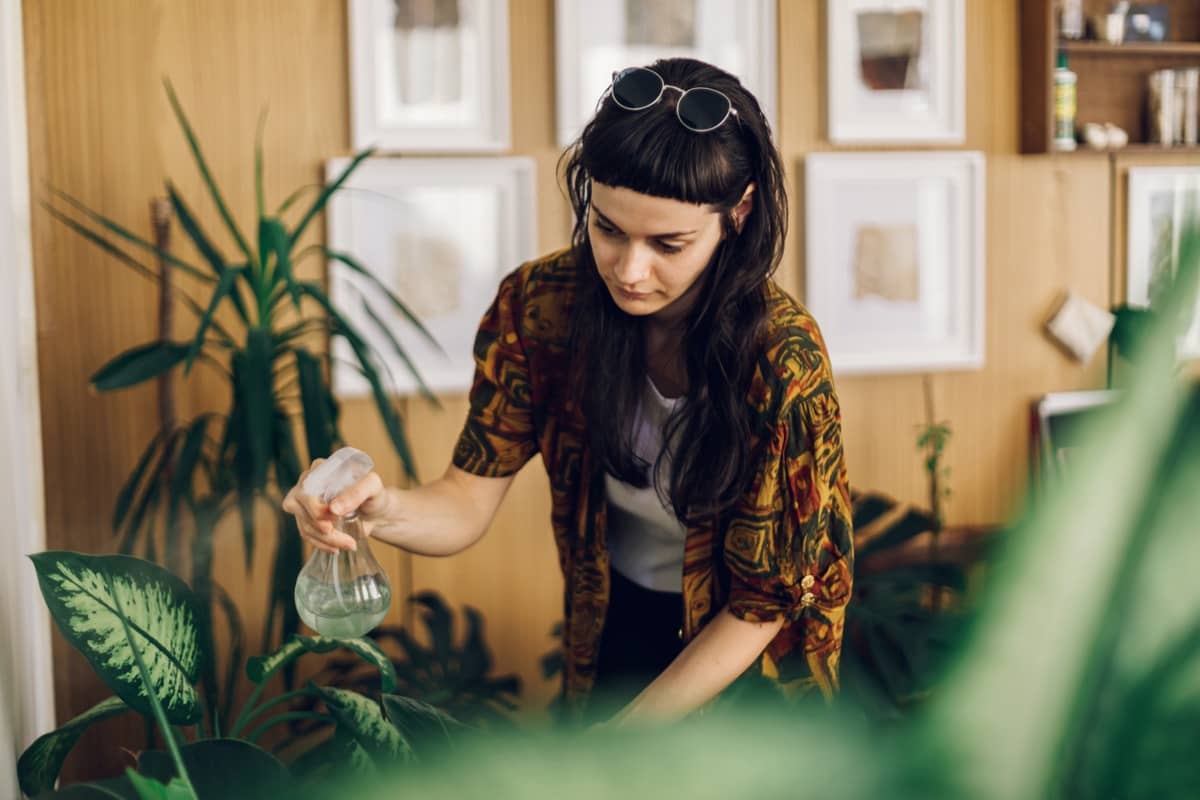
Whether it’s insufficient watering, overwatering, pests, or environmental factors like temperature and humidity fluctuations, you can take steps to correct these issues. Remember that every plant is unique and may require different care techniques. It’s essential to research each specific type of plant you own to understand its individual needs.
Natural and Organic Ways to Treat Houseplants Leaf Curl
Organic Remedies for Houseplants Leaf Curl
One organic remedy for leaf curl is Neem oil. Mix a few drops of Neem oil with water in a spray bottle and apply it to the affected plant. Another option is using garlic-infused water. Garlic has natural antifungal properties that can combat fungal infections, often leading to leaf curl. Crush a few garlic cloves, soak them in water overnight, then strain the liquid and use it as a foliar spray on your plants.
You can also create an essential oil solution by mixing equal parts rosemary oil and water. Rosemary has antimicrobial properties that can help prevent further infection in curled leaves. Apply this mixture directly onto the affected foliage. Additionally, incorporating compost into your potting soil will provide crucial nutrients for healthy plant growth while improving soil structure. Compost contains beneficial microorganisms that promote root development and overall plant vigor.
Natural Treatments for Leaf Curl in Indoor Plants
Ensuring proper watering techniques can also contribute to treating leaf curl naturally. Overwatering or underwatering your plants can stress them out, leading to various issues, including leaf curl. Ensure you’re watering your plants consistently, allowing the soil to dry slightly between waterings. Furthermore, maintaining proper humidity levels in your home can make a significant difference in preventing leaf curl.
In case you missed it: Top 12 Winter Care Tips for Houseplants: Every Gardner Must Know

Many indoor plants thrive in high-humidity environments, so consider placing a tray filled with water near your plants. Additionally, inspecting your indoor plants regularly is crucial when dealing with leaf curl naturally. Look out for any signs of pests, such as spider mites or aphids, which could be causing damage and leading to curled leaves. Implementing these natural treatments into your plant care routine addresses current issues and prevents future leaf curl occurrences in indoor plants.
How to Prevent Leaf Curl in Houseplants Naturally
Over-watering or under-watering can lead to leaf curl. Ensure you water your plants consistently, allowing the soil to dry between each watering session. Some indoor environments may be too dry for certain plant varieties, leading to leaf curl. Increase humidity by regularly misting the leaves or placing a water tray near the plants.
Insufficient light can cause stress on plants, resulting in curled leaves. Place your houseplants in areas where they receive appropriate sunlight or invest in artificial grow lights if needed. Extreme temperatures can cause leaf curl as well. Keep your indoor space within a suitable temperature range for your specific plant species.
Pests like aphids and spider mites can harm foliage and contribute to leaf curl. Regularly check your plants for any signs of infestation and take necessary measures to control pests using organic solutions such as Neem oil or insecticidal soap. Ensure that your houseplants receive adequate nutrients through organic fertilizers or composting techniques specifically designed for indoor gardening.
Organic Fertilizers for Preventing Leaf Curl in Houseplants
Organic fertilizers are a great natural way to prevent leaf curl in houseplants. These fertilizers provide the necessary nutrients for healthy plant growth, which can help strengthen the leaves and reduce the risk of curling. One option is compost tea, made by steeping compost in water to create a nutrient-rich liquid fertilizer. This organic fertilizer provides essential nutrients and introduces beneficial microbes that improve soil health and plant resilience.
In case you missed it: 7 Houseplants That Love Bottom Watering: A Beginners Guide
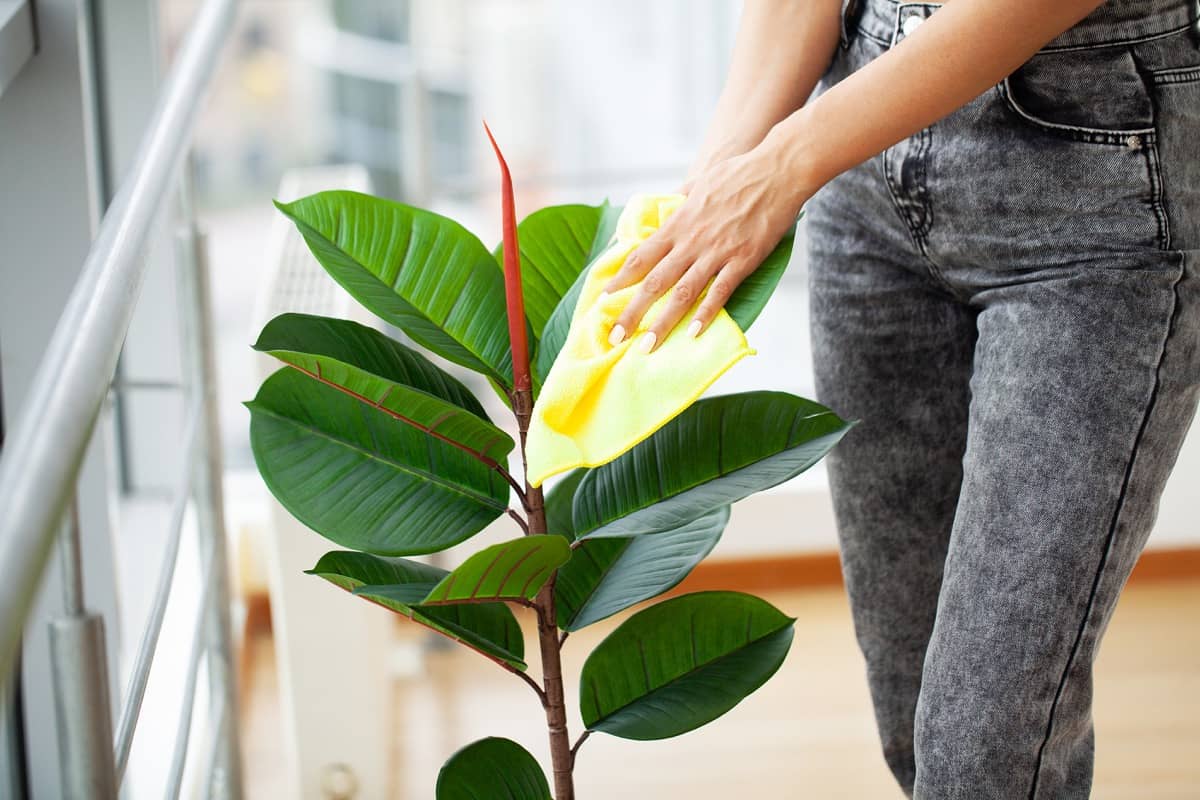
Another effective organic fertilizer is a seaweed extract. Additionally, worm castings or vermicompost are excellent choices for preventing leaf curl. These rich sources of nutrients release them slowly over time, providing long-lasting nourishment to your plants without the risk of chemical burn associated with synthetic fertilizers.
Eco-friendly Ways to Treat Leaf Curl in Indoor Plants
One of the most eco-friendly ways to treat leaf curl in indoor plants is by ensuring they receive the right amount of water. Overwatering or underwatering can lead to stress and ultimately result in leaf curl. So, ensure you water your plants appropriately, allowing the soil to dry between each watering. Maintaining optimal humidity levels can also help prevent leaf curl.
Some houseplants prefer higher humidity, while others thrive in drier conditions. Invest in a humidifier or use a pebble tray with water beneath your plant’s pot to create moist air. Pests like aphids and mites can cause damage that leads to leaf curl. Instead of using chemical pesticides, opt for eco-friendly alternatives such as Neem oil or insecticidal soap spray.
Light exposure is crucial for healthy plant growth and preventing leaf issues like curling. Place your indoor plants near windows where they can receive ample sunlight, but avoid direct intense sunlight that could scorch their leaves. Regularly pruning off damaged or diseased leaves will improve airflow around the plant, reducing moisture buildup and preventing fungal diseases that may contribute to leaf curl.
Herbal Remedies for Houseplants Leaf Curl
One popular herbal remedy is chamomile tea. Brew a strong cup of chamomile tea, allow it to cool, and then use it as a foliar spray for your plants. Aloe vera is another fantastic remedy for treating leaf curl in houseplants. Its soothing gel can alleviate stress-induced curls on leaves.
Apply Aloe vera gel directly onto the affected leaves and let it sit for several hours before rinsing off. Rosemary extract is known for its ability to improve circulation in plants, which can aid in reducing leaf curl caused by nutrient deficiencies or poor soil conditions. Dilute rosemary extract according to package instructions and use it as a root drench or foliar spray.
Environmentally Safe Solutions for Preventing Leaf Curl in Indoor Plants
Indoor plants add beauty to our homes, purify the air, and create a calming atmosphere. Overwatering or underwatering can lead to leaf curl in houseplants. Finding the right balance is essential by regularly checking the soil’s moisture level and adjusting your watering schedule. Indoor environments often have low humidity levels, which can cause leaves to curl.
In case you missed it: List of Houseplants That Grow from Leaf Cuttings
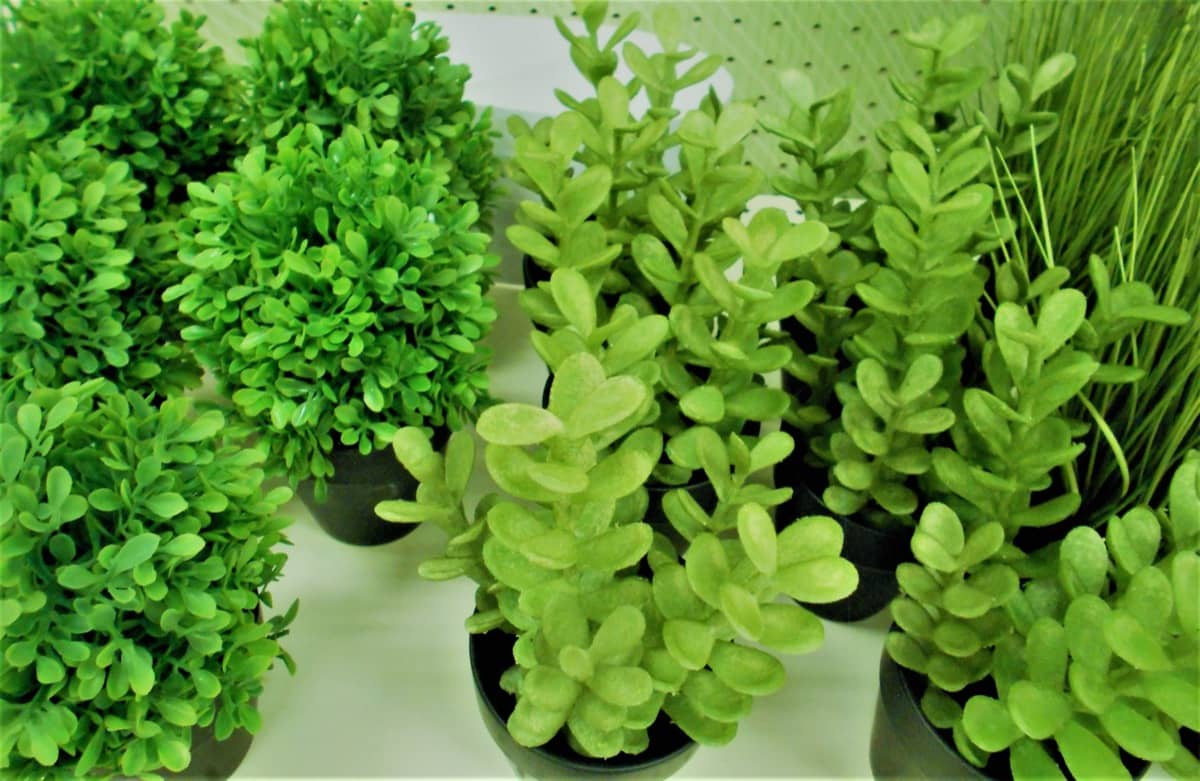
Increase humidity around your plants by placing a tray filled with water near them or using a humidifier. Insufficient light can stress out indoor plants and result in leaf curl. Ensure your plants receive enough natural light, or invest in artificial grow lights. Avoid chemical-based fertilizers that can harm both your plants and the environment.
Instead, opt for organic options like compost tea or seaweed extract that provide nutrients gradually without causing damage. Pests like aphids and spider mites can contribute to leaf curl in indoor plants. Use environmentally friendly pest control techniques such as Neem oil spray or insecticidal soap to keep these unwanted visitors at bay. Good air circulation is crucial for healthy indoor plants as it helps prevent fungal growth and keeps pests away, reducing the risk of leaf curl.
Chemical-free Methods for Curing Leaf Curl in Indoor Plants
Maintaining optimal humidity levels is crucial for preventing leaf curl. Use a humidifier or place a tray filled with water near your plants to increase moisture in the air. Extreme temperatures can stress out your indoor plants, leading to leaf curl. Keep them away from drafts and direct sunlight, providing a stable and moderate temperature environment. Supplying your plants with essential nutrients is vital for their overall health.
Use organic fertilizers rich in nitrogen, phosphorus, and potassium to promote strong growth and prevent nutrient deficiencies that may cause leaf curl. Pests like aphids and spider mites can harm plant leaves, causing them to curl. Implement natural pest control methods such as Neem oil spray or introduce beneficial insects like ladybugs to keep these pests at bay. Remember, prevention is always better than cure when maintaining healthy indoor plants.
Organic Soil Amendments for Preventing Leaf Curl in Indoor Plants
Organic soil amendments are vital in preventing leaf curl in indoor plants. By enriching the soil with natural and beneficial nutrients, you can create an environment that promotes healthy growth and reduces the risk of leaf curl. One effective organic soil amendment is compost. Compost is made from decomposed organic matter, like kitchen scraps, yard waste, and leaves.
Adding to the soil improves its structure and fertility while providing essential nutrients for plant growth. Another great option is worm castings. These are rich in beneficial microbes and contain high nitrogen, phosphorus, and potassium levels – essential for healthy plant development. Adding worm castings to your potting mix or top-dressing around your plants can significantly enhance their health.
Additionally, incorporating well-rotted manure into your soil can provide a nutrient boost while improving its water-holding capacity. Manure contains valuable minerals like calcium and magnesium, which help prevent nutrient deficiencies that may contribute to leaf curl. Using seaweed extract as a soil amendment also offers numerous benefits for indoor plants. Seaweed contains naturally occurring hormones that stimulate root growth and improve plant stress tolerance.
In case you missed it: Dramatic Houseplant Combinations for Homes
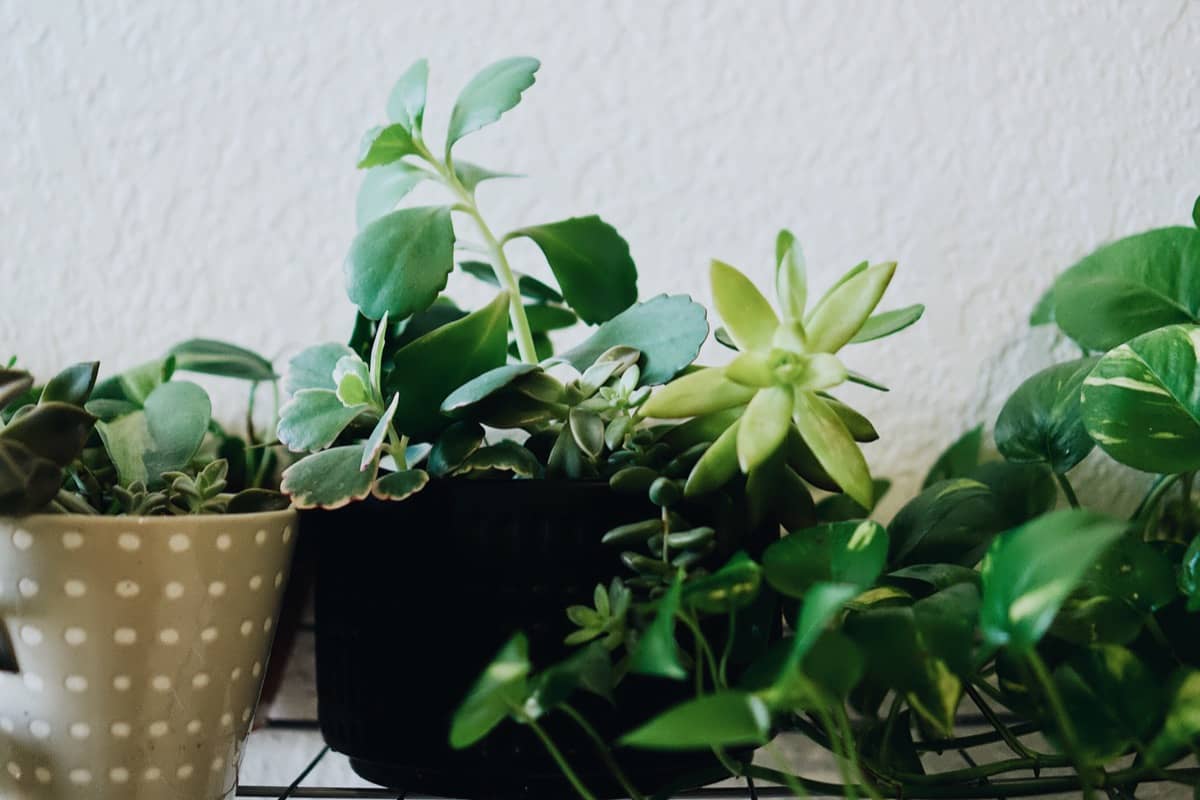
It also enhances nutrient uptake by acting as a bioactivator for the microbial population in the soil. Adding perlite or vermiculite to your potting mix can improve drainage while retaining moisture –crucial factors in preventing leaf curl caused by overwatering or poor soil water retention capacity. By incorporating these organic amendments into your indoor plant care routine, you can ensure optimal growing conditions that discourage leaf curl while promoting vibrant foliage and robust growth without relying on harmful chemicals or synthetic fertilizers.
Home Remedies for Treating Leaf Curl in Houseplants
You don’t always have to rely on chemical treatments when dealing with leaf curl in your houseplants. Several natural and organic remedies can effectively help restore the health of your indoor plants. Epsom salt can help prevent nutrient deficiencies that may contribute to leaf curling. Dissolve a tablespoon of Epsom salt in water and use it as a foliar spray. The soothing properties of aloe vera gel can aid in reducing stress-related leaf curling. Apply aloe vera gel directly onto the affected leaves.
Cinnamon has antifungal properties that are effective against fungal infections causing leaf curling. Sprinkle cinnamon powder on topsoil or mix it with water to create a solution and apply it to the plant’s foliage. Banana peel tea is rich in potassium and other nutrients essential for healthy plant growth. Try soaking banana peels in water overnight, then use this infused liquid as a fertilizer for your plants. These natural home remedies can address leaf curl issues without harmful chemicals.
Conclusion
Taking care of houseplants can be a rewarding and fulfilling experience. However, dealing with leaf curl issues can be frustrating. Natural and organic remedies are available to help you treat this problem effectively. By understanding the causes of leaf curl, such as improper watering or pest infestation, you can take preventive measures to keep your plants healthy and vibrant. Regularly inspecting your plants for any signs of distress will allow you to catch issues and address them promptly.
In case you missed it: 12 Pet Friendly Houseplants: Safe for Dogs and Cats
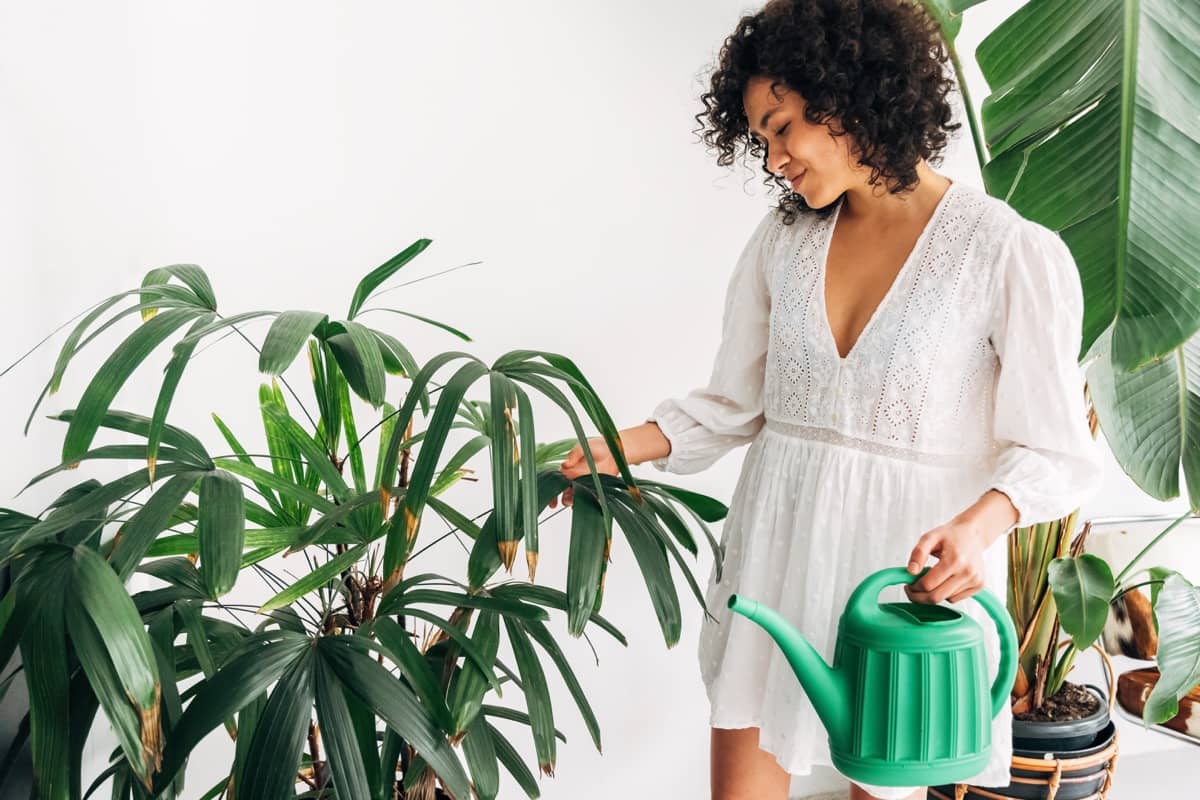
When it comes to treating leaf curl naturally, options like adjusting watering habits, providing adequate humidity levels, using Neem oil or insecticidal soap for pests, and implementing proper fertilization techniques can make a significant difference in restoring your plant’s health. Remember that patience is key when treating leaf curl. It may take some time for the plant to recover fully from its condition. Be consistent with your chosen remedy and monitor the progress closely.
- Gardening Techniques in Planting Vegetables
- Where to Place Indoor Plants in Your Home
- How to Grow Tomatoes Organically at Home: A Comprehensive Guide
- Organic Gardening on a Budget: Low-Cost Methods and Materials
- Gongura Seed Germination and Planting Methods
- Cabbage Seed Germination and Selection
- Broccoli Seed Germination and Selection
- Asparagus Seed Germination and Variety Selection
- Seasonal Flower Gardening: Best Practices for Spring, Summer, Fall, and Winter